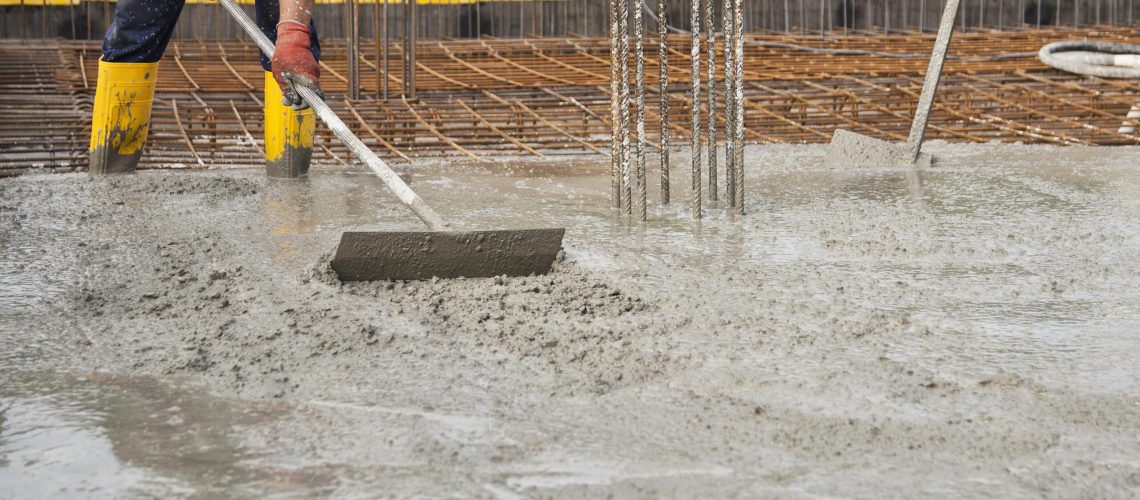Types of foundation for building construction are critical in determining a structure’s stability. The foundation supports the building and evenly distributes its weight to the ground as it is the lowermost part of any building. Therefore, determining the appropriate type of foundation is the first step in constructing any building. A building’s foundation also plays a vital role in vertical construction and keeping the structure upright. To build a sturdy foundation, it’s essential to consider factors such as soil dynamics, moisture levels, and weather conditions as they can cause foundation damage. The reason behind the success of tall buildings is their strong foundations.
Requirements For Any Foundation
The basic requirement for any foundation is stability and strength.
- Stability – The foundation should be able to carry all loads without causing any movement in the soil. This would compromise the structure’s stability. It should also provide a level base for the superstructure.
- Strength – A foundation should be strong enough to support dead, imposed, and wind loads.
Foundation should fulfill the following objectives:
- Distribute the structure’s weight over a large soil area.
- Avoid unequal settlement.
- Prevent the lateral movement of the design.
- Increase and improve structural stability.
Types Of Foundation
The categorization of foundations can be divided into two types, namely shallow and deep foundations. Shallow foundations are used for buildings where the load from the structure is relatively low compared to the bearing capacity of the soil, like masonry houses and low-rise buildings. Also, soil with a high bearing pressure close to the surface can effectively put large buildings on pad foundations.
Types of Shallow Foundations
- Strip Foundation. A strip foundation is a type of foundation that involves a continuous strip of masonry or concrete that serves as a solid and stable base for constructing walls. Usually used in weaker soil and regions, it provides a steady and level support for building structures. No information has been left out while paraphrasing.
- Pad Foundation. When constructing a building, it is important to use a pad foundation to ensure that the structure is properly supported and that the load is transferred into the soil or rock. These types of foundations are made of reinforced concrete and require steel at both the top and bottom. The size of the pad will vary depending on the load and the condition of the ground. It is designed to spread column or point loads across the pad area. Since reinforced concrete is very rigid, it is assumed that the load is evenly distributed through the pad to the soil beneath.
- Combined footings. When constructing combined footings, the design is different from isolated footings, although they are a combination of them. These footings are built when multiple columns are in proximity and their isolated footings would overlap.
- Raft or Mat Foundation. The Raft or Mat Foundation is a type of foundation that covers an area equal to or greater than the base of a building, providing support for its walls or lightly loaded columns, and serving as a base for ground-level floors. However, it is not recommended to use these foundations in areas where the groundwater table is higher than the soil-bearing surface, as doing so may cause scouring and liquefaction.
Deep Foundations. Buildings with tall structures and heavy loads on their walls typically need deep foundations to transfer the weight to a stronger layer of ground located deeper beneath the surface. It is essential to have these deep foundations to ensure stability and safety for high-rise buildings.
Types of Deep Foundations
- Pile foundations. The purpose of pile foundations is to transfer heavy weights from the building structure to the solid rock layers beneath the ground surface. These types of foundations are usually utilized in situations where the soil is not strong enough to sustain the load of heavy weights near the surface. Moreover, pile foundations can be utilized to create either a temporary or permanent retaining wall.
- Caisson Foundation or drilled shafts. When it comes to structural engineering in aquatic environments such as rivers, estuaries, and the sea, Caisson Foundations or drilled shafts are often employed. These box-shaped structures are not ideal for stabilizing soils with unstable caving formations or boulder compositions. It is crucial to consider these factors when selecting the appropriate foundation for a project.
How long can a foundation last?
If concrete, brick, and stone foundations are constructed correctly, they can have a lifespan of over 100 years. It is advisable to renew the waterproof coatings that safeguard the foundations every decade. Furthermore, conducting inspections, fixing leaks, and addressing slope damage can increase a foundation’s longevity.
Conclusion
The construction of a durable building is not only important for its longevity, but also for the safety and security of its occupants, their possessions, the community, the investment, and the reputation of the developer. A weak or defective foundation poses a significant risk to the project’s integrity. This write-up serves as general information, and it is recommended that expert advice be sought before selecting a foundation for your construction project. Professionals will help you determine the appropriate type of foundation for your building and its environment.


